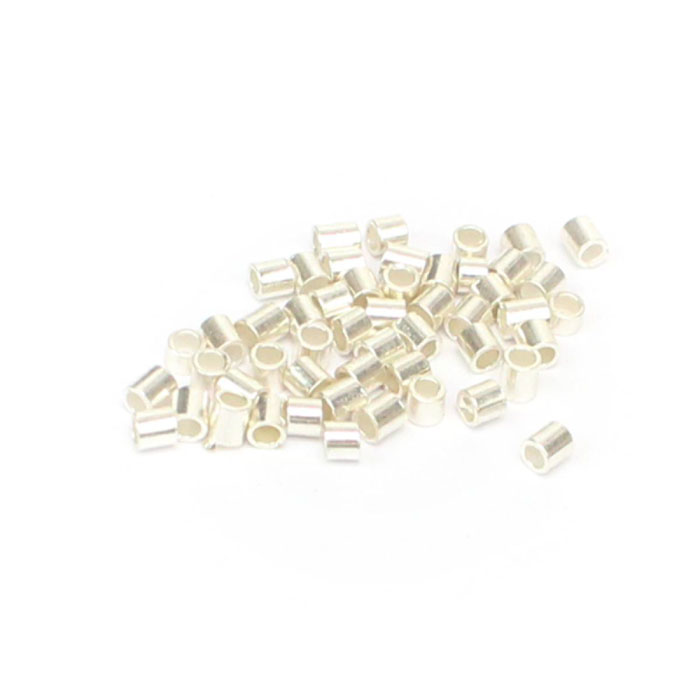A Guide to Basic Jewellery Findings
What are findings? And why are they so important to jewellery making?
Findings are essentially the ‘nuts and bolts’ of making jewellery, they are small metal components that connect the various sections of jewellery together. You will always need a good selection of these and will need to top up your ‘stash’ so that you don’t run out of anything important!
We have a huge selection of findings which you can shop here:
Shop Findings
Here’s a guide to get you in the know on what basic finding does what when making jewellery!
Bails
There are many types of Bail available, they are small loops of metal used to attach pendants to a chain.
How to use:
Depending on the type of bail, you can pinch, glue or solder a bail to the top of your pendant, and then thread a chain through the wider section to suspend it as part of a necklace.

Peg Bails
Peg Bails are used to attach a half-drilled pearl or gemstone to a chain or earring finding.
How to use:
Add a dab of glue to the peg and insert it into a half-drilled pearl, to create an anchor point to attach it to a chain or earring finding.

Shop Bails
Jump Rings
Jump Rings are small pre-formed hoops of metal (although you can make them yourself) and they’re designed to make Chainmaille or to secure charms or findings to your threaded jewellery.
How to use:
Using two pairs of pliers, open the Jump Ring by pushing the ends passed each other in a north to south motion. Then simply add your wrapped loop or charm and close it again.

Shop Jump Rings
Eyepins & Headpins
Headpins are small sections of wire with a tiny ball, flat head or motif at the end of them. Eyepins are similar but have a small loop at the end. Both are used to make drops or connectors in jewellery.
How to use:
Take a Headpin or an Eyepin and thread onto a chosen gemstone, then create a simple loop or a wrapped loop to attach it to a finding.

Shop Headpins
Shop Eyepins
Crimp Tubes
Crimp Tubes are small metal tubes designed to attach findings to the ends of a beading thread in jewellery pieces.
How to use:
Add a Crimp Tube followed by a Jump Ring to the end of your beading thread, fold the thread back over and tuck the end through the same crimp in the opposite direction, trapping the Jump Ring. Use a Crimping Plier to secure it in place.

Crimp Covers
These components resemble the computer game character Pac Man, or possibly an open Babybel Cheese! They are designed to cover and disguise Crimp Tubes leaving a smooth and professional finish.
How to use:
After securing your Crimp Tube to your work, place one of these findings over the Crimp and using Crimping Pliers or Flat/Chain Nose Pliers, gently close it over the tube. This gives the join the illusion of being another bead.

Calotte/Clam Shell Crimps
These findings are for hiding the knot or crimp at the end of your jewellery and provide a secure loop to attach a Jump Ring and Clasp to.
How to use:
Knot or crimp the end of your thread then pass it through the hole in the centre of the Calotte so that the knot sits inside the finding, then use pliers to gently close the Calotte around it.

Shop Crimp Covers
Connectors
Connectors are used for joining jewellery components together.
How to use:
Connectors are either pre-formed or made by making a loop of wire either side of the same bead; use these to create bracelets and necklaces by joining several of them together.

Shop Connectors
Brooch Back
Brooch backs are the pin part of a badge or brooch.
How to use:
Glue, sew or wire wrap your chosen embellishments to the front of the brooch finding and secure it to your clothing or fabric using the pin.

Shop Brooch Backs
Shop All Findings
We hope this guide to basic findings has helped! Keep an eye out for our next blog on specific findings for Earrings!
Have a fab time making jewellery!
JM

